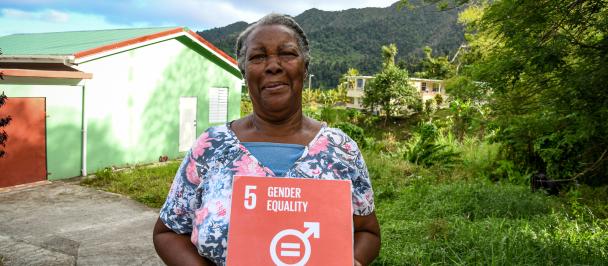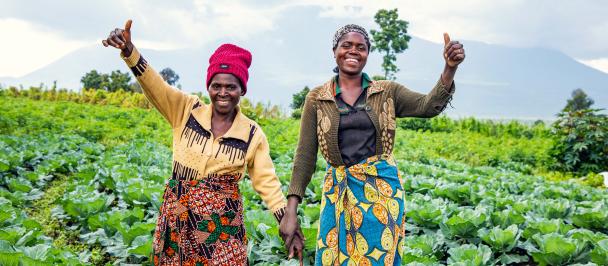Remarks on The Impact of War on Development: The Case of Yemen
The Case of Yemen
September 26, 2019
As prepared for delivery.
Opening / Overview of new Report
H.E. Minister of Foreign Affairs of the Republic of Yemen
H.E. Ambassador Jurgen Schulz
Excellencies,
Colleagues and Friends,
I would like to warmly welcome our distinguished guests to today’s launch by the United Nations Development Programme (UNDP) of an important new report – Assessing the impact of conflict in Yemen on the achievement of the Sustainable Development Goals (SDGs).
It follows on from our previous report released in April this year which concluded that the conflict has already reversed human development by 21 years. That report projected that if the war in Yemen continues until 2030, that setback will increase to four decades.
While the armed conflict has gained much attention, the impact of the war on human development has not been fully assessed yet. On this basis, UNDP commissioned the University of Denver to develop a comprehensive research series comprising three separate reports.
This new report which is part of our Impact of War research series shines a light on new and additional areas -- specifically Yemen’s development trajectory. It assesses Yemen’s ability to achieve No Poverty (SDG 1), Zero Hunger (SDG 2), Decent Work and Economic Growth (SDG 8), and Reduced Inequalities (SDG 10) by 2030 despite the ongoing crisis.
This new report makes clear that the four years of protracted conflict that the people of Yemen has had a devastating impact on the country’s hard-won development gains. It underscores that Yemen is not only facing a political and humanitarian crisis -- but that it is also in the midst of a devastating development crisis.
The report also projects a stark reality for Yemen if the conflict continues past 2019. In particular:
• Yemen will have the greatest depth of poverty and the lowest calorie consumption per capita in the world. In particular, nearly nearly half of the population will be malnourished if conflict continues through 2022. This number is expected to rise to 95 per cent of the population by 2030;
• It will also suffer from the second poorest imbalance in gender development and the second poorest income inequality globally;
• In addition, as compared to 2014, Yemen will have the second greatest reduction in economic activity -- of any country in the world;
• As a result, the country is not on track to achieve any of the SDGs by the year 2030.
The longer the conflict continues, the harder, longer and costlier the recovery process will be and the more reverses in human development regresses we will witness. In addition, the greater share of suffering will be shouldered by the most vulnerable, especially children.
My Mission to Yemen
I saw this stark reality when I undertook a five-day visit to Yemen in July. The destruction and human suffering I witnessed as a result of the conflict had a profound impact upon me.
What we are witnessing is a catastrophe -- first and above all, for the people of Yemen.
80 per cent of the population requires some form of humanitarian assistance with over 10 million on the brink of famine.
War has halted the economy. Infrastructure and agriculture have been decimated. The national income has been halved. Nearly five million children do not have access to education. Over one third of businesses have closed and 60 per cent of Yemenis are without jobs. Women and young people are among those disproportionally affected.
While Yemen was lagging behind in gender equality before the war, increased rates of child marriage and gender-based violence as a result of the crisis represent yet more challenges in this area.
During my visit, I met with women and men who only want peace, relief, and their dignity restored. I witnessed the resilience of the Yemeni people and I heard hope in their voices and in their stories.
I saw an enormous amount of vital work underway to support the people of Yemen as they struggle with this crisis.
I met Nihayah (Aden), a recently divorced mother to a young son was unable to meet her basic needs. She has benefitted from training and start-up funding allowing her to establish a clothing shop in her home. Her son is now able to go to school.
I also met Ahmed (Aden), who despite being wheelchair-bound, has not lost his optimism and determination for a better future for himself and his family. He has undergone UNDP vocational training to set up a shop to repair mobile phones.
Because of UNDP and local partners, both can now meet their basic needs as well as save for their futures.
The Importance of Partnerships
Our own work at UNDP, in close concert with agencies across the UN Development System and an unprecedented partnership with the World Bank in particular, is focused on helping Yemenis preserve their dignity; maintain the functioning of institutions; and keep the solid footing needed to recover effectively when peace returns.
We recognize that humanitarian responses alone is simply not enough and to preserve Yemen’s developmental gains for post-conflict recovery.
In this respect, International Financial Institutions such as the World Bank Group are key development partners for UNDP. In addition to policy expertise, economic analysis and knowledge products, they bring considerable development resources and deep ties to national governments to the table.
UNDP works closely with the World Bank to support livelihoods and preserve vital and key services of water, food, health, education and safe roads. This has been possible by shoring-up the national-based Social Fund for Development (SFD) and Public Works Projects (PWP) and their community networks to deliver these services across Yemen. UNDP will continue to work with the World Bank and its key partners – SFD and PWP – to stave off famine by providing support to nutrition interventions, cash for work, vital services, and small businesses to continue access to key local goods and services.
Through the generosity of donors who have been keen to ensure the application of development perspectives in crisis response, the Yemeni people have seen concrete improvements in their everyday lives. For instance, thanks to a pledge of US $400 million from the International Development Association of the World Bank, UNDP has been able to support the access of people to jobs, education, healthcare and functioning markets in 300 districts across Yemen’s 22 governorate.
I would like to thank our donors and our funding partners such as the World Bank for their steadfast support.
Our work with our partners in Yemen is an important example of strong cooperation across the humanitarian, peace and development spectrums; with a wide range of actors coming together to deliver results in a coordinated fashion.
Development is still a priority in Yemen
Such cooperation is vital to support Yemen on its development pathway.
And for development practitioners and partners, the report is a strong reminder that development must remain a priority -- even in the midst of the deepest crisis.
UNDP has been in Yemen for over 50 years and we remain dedicated to a vision of peace and long-term development during the crisis. UNDP’s scaled-up actions fill a unique role within the humanitarian-development-peace nexus in Yemen. UNDP in Yemen alone has delivered nearly US$520 million in development assistance since the conflict began in 2015. And our experience shows that development simply cannot wait.
Livelihoods and institutions must be preserved, not only to slow the slide to destitution and to restore dignity, but also critically to prepare the way for recovery that lasts. This is true in Yemen, and it is true elsewhere in the region and around the world, where populations are seeking to cope with or recover from crisis.
While emergency security and humanitarian inventions will continue to be essential, UNDP’s on-the-ground experience in 170 countries has shown that prevention, preparedness and integrated efforts to address root causes of fragility is more effective to sustain peace and security. It means supporting governance institutions both at central and local levels to provide, in an equitable and inclusive way, service delivery, rule of law, human rights, justice and reconciliation -- while strengthening the state’s resilience to future shocks and crises.
However, my overall sense is that the world underestimates and chronically under-invests in development as a way of averting crises and conflicts, as well as a means of fostering early recovery and seeking to ensure that once peace is achieved, it can be sustained.
Thus, across the UN System, we are increasingly making the case that development is central in all contexts, especially when it comes to addressing fragility and where there are large humanitarian needs -- as is the case with Yemen. Humanitarian, development, and peace actors need to work together to support those most in need.
Closing / Call to Action
In closing, I believe that this report deserves to be read in detail as it brings added value to our understanding of the situation in Yemen.
This report provides an evidence-based analysis of the realities of development in Yemen. In particular, the findings of this report shed light on the opportunity cost of the on-going war in Yemen and advocate that a political settlement to the war in Yemen is the best alternative for the country, before it slips to the point of no return.
I commend my colleagues at UNDP Yemen and in the UNDP Regional Bureau for Arab States for having the vision to call for; and engage in this analysis. I also commend the researchers at the Pardee Center for International Futures at the University of Denver for their dedication in developing the reports and helping the international community understand the severity of the protracted conflict on sustainable development.
We must also see the report as a call to action. As a champion for stronger linkages between relief and development, I call upon the international community to stay on course, turn pledges into contributions and continue their support of Yemen and its people at this vital time in its history.
For the entire international community, the call is clear. Do not turn your backs on Yemen and its people. There is vital work to be done including the delivery of life-saving key basic services.
The importance of the promise of solidarity enshrined in the 2030 Agenda to “leave no one behind” is more critical in Yemen than any other country.
It is clear that our actions now are critical to build that brighter future for the people of Yemen.
Finally, the report can be understood as another strong voice in the chorus calling for peace. Peace is indeed the only viable solution.
Ending the war now is the only option to allow Yemenis to find a path to the brighter future – it is a brighter future that they are entitled to.

 Locations
Locations




